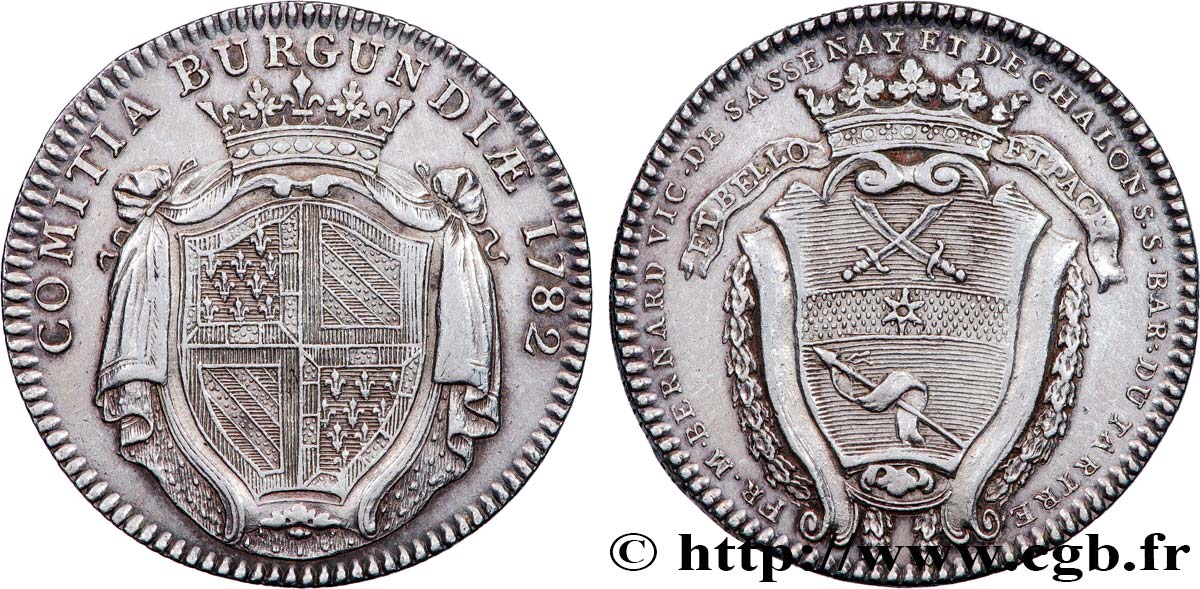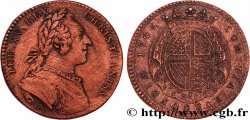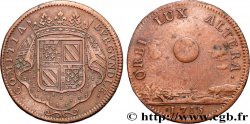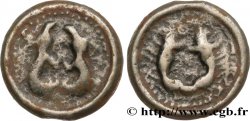fjt_909709 - BURGUNDY (STATES OF...) François-Marie Bernard, vicomte de Sassenay et de Chalon, élu de la noblesse 1782
140.00 €(Approx. 159.60$ | 120.40£)
Quantity
Add to your cart

Type : François-Marie Bernard, vicomte de Sassenay et de Chalon, élu de la noblesse
Date: 1782
Metal : silver
Diameter : 29,5 mm
Orientation dies : 6 h.
Weight : 10,10 g.
Edge : cannelée
Rarity : R1
Obverse
Obverse legend : COMITIA BURGUNDIÆ 1782.
Obverse description : Armes de Bourgogne sur un manteau d’hermines.
Reverse
Reverse legend : FR. M. BERNARD. VIC. DE. SASSENAY ET DE CHALON S. S.BAR. DU TARTRE / ET BELLO ET PACE .
Reverse description : Armes de Fr. Bernard de Sassenay couronnées. Sur une banderole : ET BELLO ET PACE.
Reverse translation : En temps de guerre et en temps de paix.
Commentary
M. de Sassenay n'étant ni Élu, ni Alcade, ne devait pas avoir de bourse, mais il n'en fit pas moins frapper un jeton pour rappeler son entrée aux États.
Ceci est appuyé sur un passage du Carnot des États où il est dit : " M. de Sassenay a présenté un certificat aux commissaires-vérificateurs des titres, par lequel il paroît qu'il a été trouvé de la qualité requise. Lecture faite, la Noblesse a délibéré de le recevoir en leur Chambre, sans voix délibérative, jusqu'à ce qu'il ait justifié de reprise de fief". Étienne, son ancêtre, portait d'azur, à une face d'or chargée d'une molette d'éperon à six pointes d'azur, accompagnée en chef de deux coutelas posés en sautoir, les pointes en bas, d'argent, surmontant une hure de sanglier de même, et en pointe, une bannière ou étendard aussi d'argent, la lance d'or posée en bande. On peut voir, d'après le jeton, les modifications apportées à ce blason.
Ceci est appuyé sur un passage du Carnot des États où il est dit : " M. de Sassenay a présenté un certificat aux commissaires-vérificateurs des titres, par lequel il paroît qu'il a été trouvé de la qualité requise. Lecture faite, la Noblesse a délibéré de le recevoir en leur Chambre, sans voix délibérative, jusqu'à ce qu'il ait justifié de reprise de fief". Étienne, son ancêtre, portait d'azur, à une face d'or chargée d'une molette d'éperon à six pointes d'azur, accompagnée en chef de deux coutelas posés en sautoir, les pointes en bas, d'argent, surmontant une hure de sanglier de même, et en pointe, une bannière ou étendard aussi d'argent, la lance d'or posée en bande. On peut voir, d'après le jeton, les modifications apportées à ce blason.








 Report a mistake
Report a mistake Print the page
Print the page Share my selection
Share my selection Ask a question
Ask a question Consign / sell
Consign / sell
 Full data
Full data










